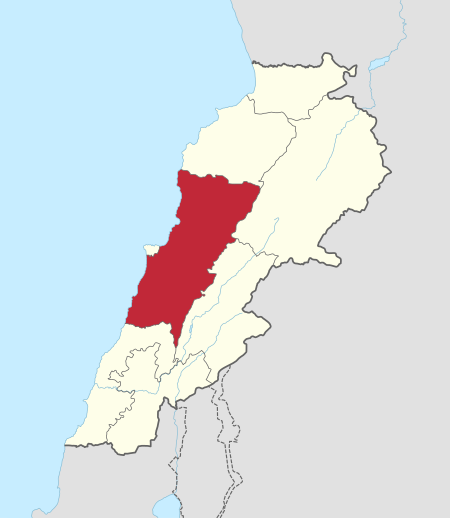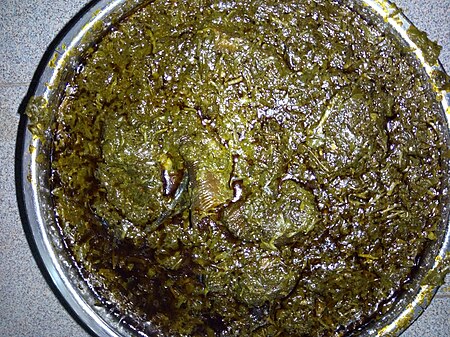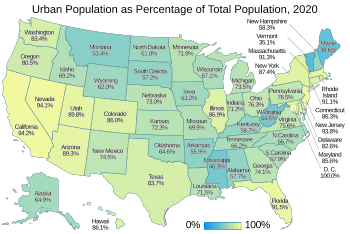Aïr Mountains
| |||||||||||||||||||||||||||||||
Read other articles:

متلازمة ويليام معلومات عامة الاختصاص علم الوراثة الطبية، وطب الأطفال من أنواع متلازمة الدماغ العضوي، ومتلازمة، ومرض وراثي سائد [لغات أخرى]، ومرض التاريخ المكتشف جيه. وليامز سُمي باسم جيه. وليامز تعديل مصدري - تعديل متلازمة ويليام (بال�…

本表是動態列表,或許永遠不會完結。歡迎您參考可靠來源來查漏補缺。 潛伏於中華民國國軍中的中共間諜列表收錄根據公開資料來源,曾潛伏於中華民國國軍、被中國共產黨聲稱或承認,或者遭中華民國政府調查審判,為中華人民共和國和中國人民解放軍進行間諜行為的人物。以下列表以現今可查知時間為準,正確的間諜活動或洩漏機密時間可能早於或晚於以下所歸類�…

Method of biological warfare Entomological warfare (EW) is a type of biological warfare that uses insects to interrupt supply lines by damaging crops, or to directly harm enemy combatants and civilian populations. There have been several programs which have attempted to institute this methodology; however, there has been limited application of entomological warfare against military or civilian targets, Japan being the only state known to have verifiably implemented the method against another sta…

NGC 6046 رمز الفهرس NGC 6046 (الفهرس العام الجديد) المكتشف ويليام هيرشل تاريخ الاكتشاف 14 مارس 1784 شاهد أيضًا: مجرة، قائمة المجرات تعديل مصدري - تعديل NGC 6046 في الفهرس العام الجديد، هي مجرة، تقع في كوكبة .[1] اكتشفت في 14 مارس 1784 بواسطة ويليام هيرشل. مراجع ^ معلومات عن NGC…

هذه المقالة عن وحدة العناية المركزة. لمعانٍ أخرى، طالع غرفة العناية المركزة (توضيح). وحدة العناية المركزة أو الحرجة أو الفائقة أو (بالإنجليزية: intensive care unit ICU أو critical care unit CCU) هو قسم خاص في المستشفى يقدم أقصى أنواع الرعاية الصحية الممكنة (انظر: طب حرج) ويتميز عادة بنسبة ا…

American poet, author, and civil rights activist (1928–2014) Angelou redirects here. For the English folk rock band, see Angelou (band). For the crater on Mercury, see Angelou (crater). Maya AngelouAngelou in 1993BornMarguerite Annie Johnson(1928-04-04)April 4, 1928St. Louis, Missouri, U.S.DiedMay 28, 2014(2014-05-28) (aged 86)Winston-Salem, North Carolina, U.S.OccupationWriterpoetcivil rights activistPeriod1951–2014SubjectMemoirpoetrySpouses Tosh Angelos (m.…

Ship of the line of the Royal Navy For other ships with the same name, see HMS St Andrew and HMS Royal Anne. 'HMS St Andrew at Sea in a Moderate Breeze', oil on canvas, by Willem van de Velde the Younger History Great Britain NameHMS St Andrew BuilderChristopher Pett, Woolwich Dockyard Launched4 October 1670 RenamedHMS Royal Anne FateBroken up, 1727 General characteristics as built[1] Class and type96-gun first-rate ship of the line Tons burthen1298 bm Length129 ft (39 m) (keel…

Carlo Rubbia Senatore a vita della Repubblica ItalianaIn caricaInizio mandato30 agosto 2013 LegislaturaXVII, XVIII, XIX GruppoparlamentareXVII: Misto (dal 4 settembre al 26 novembre 2013)Aut.-PSI-MAIE (dal 26 novembre 2013)XVIII: Non iscritto a nessun gruppoXIX: Non iscritto a nessun gruppo (fino al 9 novembre 2022)Aut. (dal 9 novembre 2022) Tipo nominaNomina presidenziale di Giorgio Napolitano Sito istituzionale Dati generaliPartito politicoIndipendente Titolo di stu…

2012 AFC President's CupTournament detailsHost countryTajikistanDates5–12 May (group stage) 24–30 September (final stage)Teams6 (final stage) 11 (total) (from 11 associations)Final positionsChampions Istiqlol (1st title)Runners-up Markaz Shabab Al-Am'ariTournament statisticsMatches played19Goals scored72 (3.79 per match)Attendance78,756 (4,145 per match)Top scorer(s) Mirlan Murzaev (8 goals)Best player(s) Alisher Tuychiev[1]← 2011 2013 → International …

33°50′N 35°32′E / 33.833°N 35.533°E / 33.833; 35.533 جبل لبنان خريطة لبنان وتظهر فيها محافظة جبل لبنان باللون الأحمر الإحداثيات 33°50′N 35°32′W / 33.833°N 35.533°W / 33.833; -35.533 سبب التسمية جبل لبنان تقسيم إداري الدولة لبنان العاصمة بعبدا خصائص جغرافية المساحة 1٬958&…

Japanese-born American mathematician Kanamori playing chess in 1975 Akihiro Kanamori (金森 晶洋, Kanamori Akihiro, born October 23, 1948 in Tokyo) is a Japanese-born American mathematician. He specializes in set theory and is the author of the monograph on large cardinals, The Higher Infinite.[1] He has written several essays on the history of mathematics, especially set theory. Kanamori graduated from California Institute of Technology and earned a Ph.D. from the University of Cambr…

American far-right fake news website WorldNetDailyType of site Far-right politics[1] Fake news[2] Available inEnglishFounded1997; 27 years ago (1997)OwnersWorldNetDaily.com, Inc.Founder(s)Joseph FarahEditorJoseph FarahURLwww.wnd.com WND (formerly WorldNetDaily) is an American far-right[1] news and opinion website. It is known for promoting fake news[2] and conspiracy theories,[3] including the false claim that former President Barack…

Artikel ini bukan mengenai Surah Al-Mu’min. Surah ke-23al-Mu'minun Orang-Orang Yang BerimanTeks ArabTerjemahan KemenagKlasifikasiMakkiyahJuzJuz 18Jumlah ruku6 rukuJumlah ayat118 ayatSurah Al-Mu'minun (bahasa Arab: المؤمنون, Orang-Orang Yang Beriman) adalah surah ke-23 dari al-Qur'an, surah ini terdiri atas 118 ayat dan termasuk golongan surah-surah Makkiyah. Dinamai Al-Mu'minun, karena permulaan ayat ini menerangkan bagaimana seharusnya sifat-sifat orang mukmin yang menyebabkan keb…

Sepatu adalah salah satu jenis alas kaki (footwear) yang biasanya terdiri atas bagian-bagian sol, hak, kap, tali, dan lidah. Biasanya juga terbuat dari kanvas atau kulit yang menutupi semua bagian mulai dari jari jemari, punggung kaki hingga bagian tumit yang difungsikan untuk [1]melindungi kaki dari kotoran berupa debu, kerikil, atau bahkan lumpur dan puing. Pengelompokkan sepatu biasanya dilakukan berdasarkan fungsi atau tipenya, seperti sepatu resmi (pesta), sepatu santai (kasual), se…

Japanese streaming television series Godzilla Singular PointPromotional release posterゴジラ S.P <シンギュラポイント>(Gojira S.P <Shingyura Pointo>)GenreKaiju, Science fiction Anime television seriesDirected byAtsushi TakahashiProduced byTakashi YoshizawaNaoki AmanoKiyotaka WakiWritten byToh EnJoeMusic byKan SawadaStudio Bones Orange Licensed byNetflix (streaming rights)Original networkTokyo MX, KBS, BS11, SUNOriginal run April 1, 2021 – June 24, …

Italian physicist, director general of the European Council for Nuclear Research Fabiola GianottiGianotti in 2015Born (1960-10-29) 29 October 1960 (age 63)Rome, ItalyAlma materUniversity of MilanKnown for ATLAS experiment[3] First female CERN Director-General Higgs boson discovery Awards Special Fundamental Physics Prize (2012) Foreign Associate of the National Academy of Sciences (2015)[1] Wilhelm Exner Medal (2017) Bruno Pontecorvo Prize (2019)[2] Scienti…

مانيش تقسيم إداري البلد هايتي[1] التقسيم الأعلى دائرة ليس كايس خصائص جغرافية إحداثيات 18°20′30″N 73°47′00″W / 18.341666666667°N 73.783333333333°W / 18.341666666667; -73.783333333333 المساحة 124.81 كيلومتر مربع الارتفاع 89 السكان التعداد السكاني 21,766 نسمة (إحصاء 2009) الرمز الجغرافي 8581646&…

Vegetables soup originating from southern Nigeria This article is part of a series inCulture of Nigeria Society Nigerians History Languages Holidays Religion Topics Architecture Cinema Cuisine Festivals Literature Media Newspapers Television Music Sports Video gaming Symbols Flag Coat of arms Anthem Miss Nigeria World Heritage Sites Religion and folklore Islam Christianity Judaism Igbo Jews Irreligion Secularism Folk beliefs Art Arts Igbo-Ukwu Kingdom of Benin Yoruba Architecture Cuisine Jollof …

حسين الهندي معلومات شخصية الميلاد 14 ربيع الثاني 1211 هـ.لكهنو. تاريخ الوفاة 1274 هـ. تعديل مصدري - تعديل السيد حسين بن دلدار علي النقوي النصير آبادي الهندي (1211 هـ - 1274 هـ). هو رجل دين وفقيه شيعي هندي ينتمي لأسرة شيعيّة معروفة إذ أنّه خامس أولاد المرجع الشيعي دلدار علي الهندي،[1&…

Overview of urbanization in the United States of America Urban and rural populations in the United States (1790 to 2010)[1] Choropleth map of urban population as percentage of US states and D.C. total population in 2020 The urbanization of the United States has progressed throughout its entire history. Over the last two centuries, the United States of America has been transformed from a predominantly rural, agricultural nation into an urbanized, industrial one.[2] This was largel…









